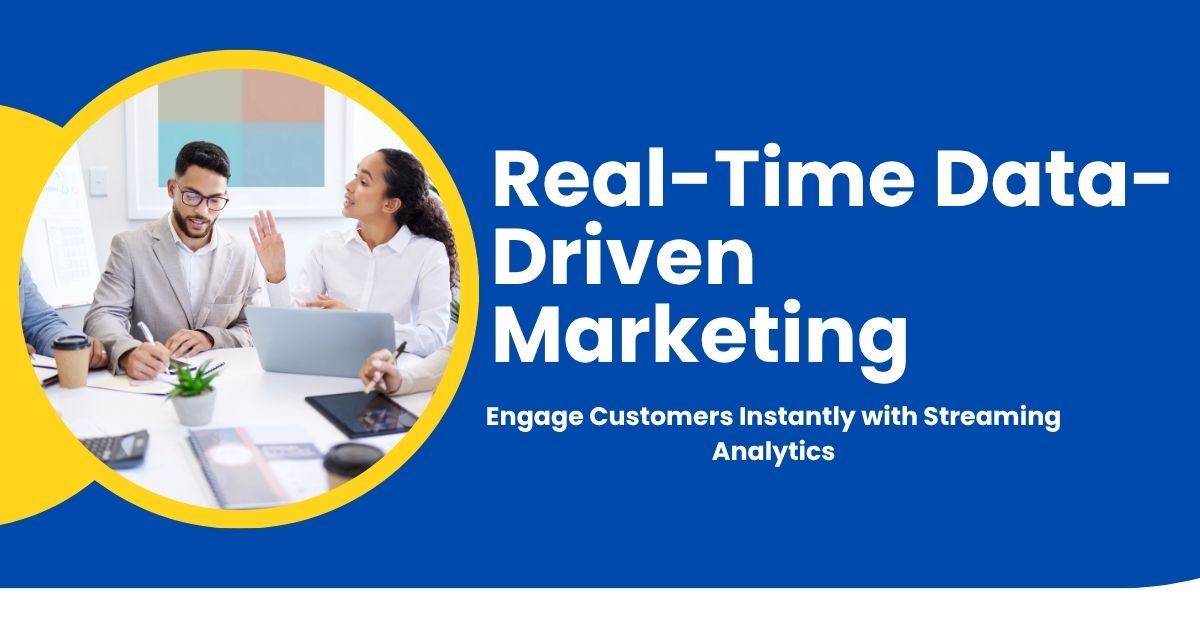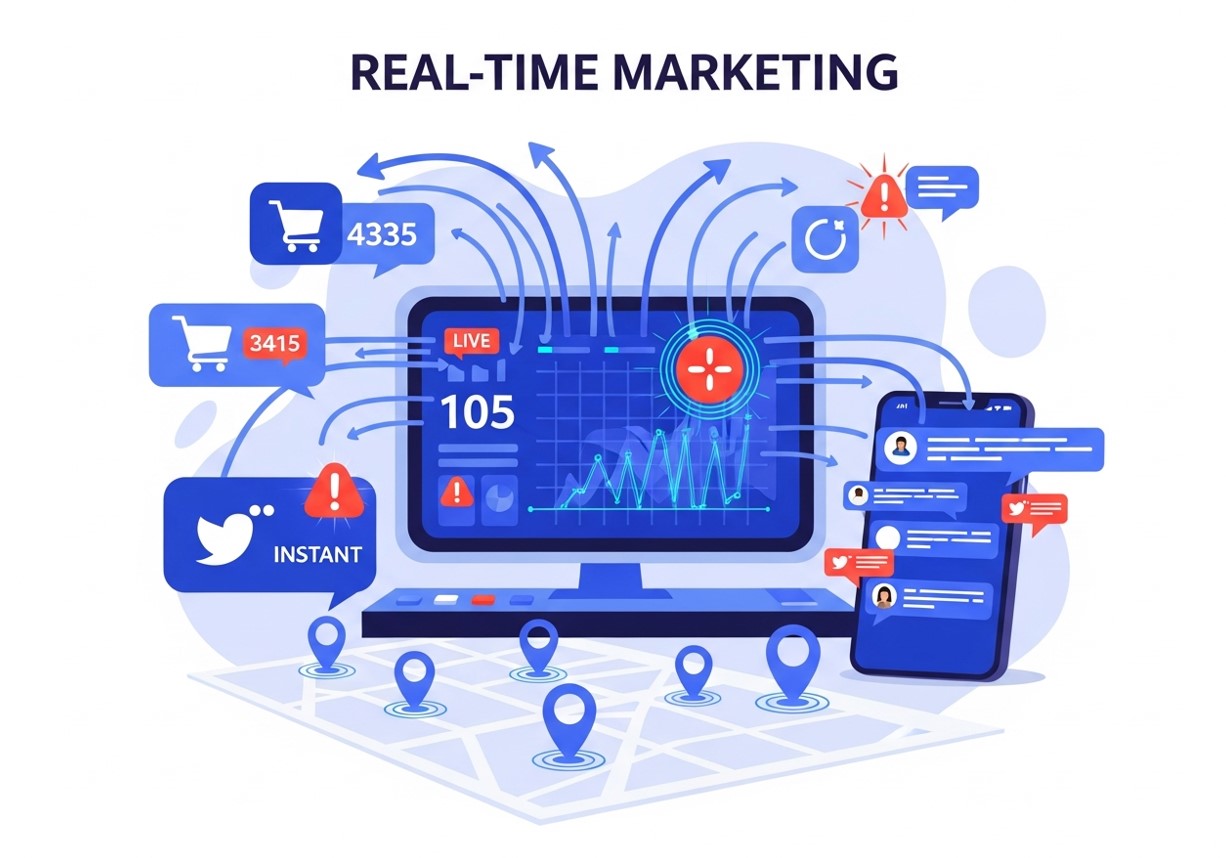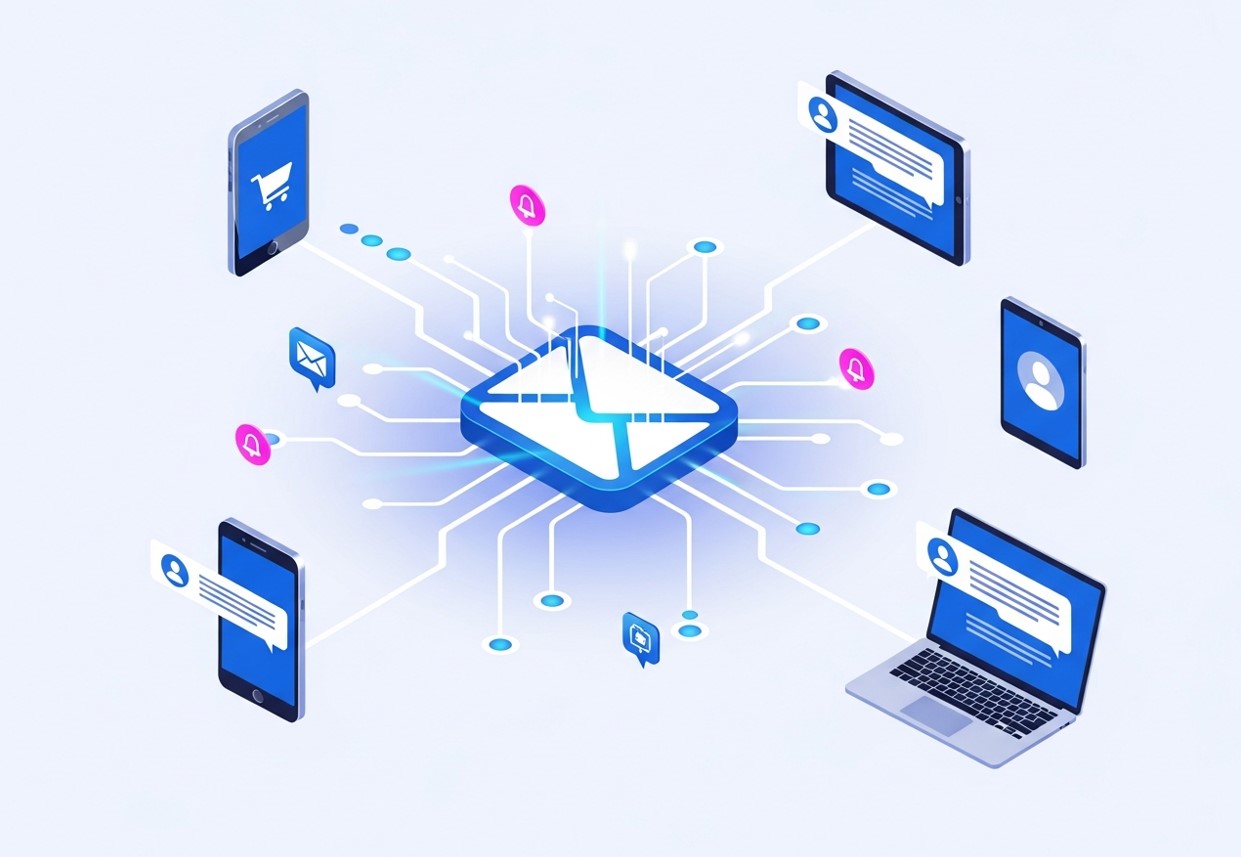
Real-time data marketing lets businesses deliver personalized, timely messages that boost engagement, conversions, and loyalty.
In marketing, timing isn’t just one thing; it’s everything. The ability to connect with a customer at the exact moment they need a solution or are most open to a message is the ultimate goal. This is where real-time data-driven marketing transforms the game. By harnessing live data streams, businesses can move beyond scheduled campaigns and start having conversations with their audience at the most opportune moments.
This approach allows brands to be exceptionally relevant, delivering personalized experiences that resonate deeply with individual consumers. Instead of guessing what customers might want, you can respond to what they are doing right now. This could be anything from their current location, their recent online browsing behavior, or even their interaction with a social media trend.
This guide will explore the mechanics and benefits of real-time data-driven marketing. You’ll learn how it works, discover its practical applications across different channels, and see how you can use it to create instant, meaningful engagement. By understanding and implementing these strategies, you can elevate your marketing efforts from static messages to dynamic, responsive interactions that build loyalty and drive results.
Understanding Real-Time Data-Driven Marketing

Real-time data-driven marketing is the practice of using up-to-the-minute data to create and deliver marketing messages that are immediately relevant to a customer’s current situation. This data can be sourced from various touchpoints, including website activity, social media engagement, mobile app usage, in-store transactions, and even IoT devices.
The core principle is simple: act on insights as they emerge. When a potential customer adds an item to their online cart, watches a product video, or enters a specific geographic area, real-time marketing systems capture this event. They then use this information to trigger an automated, personalized response, such as a push notification with a discount, a targeted ad on social media, or an email reminder.
This strategy requires a robust technology stack capable of collecting, processing, and acting on data within seconds. Key components include a Customer Data Platform (CDP) to unify user data, marketing automation tools to execute campaigns, and analytics platforms to measure performance. When these systems work in harmony, they empower marketers to engage with customers in a way that feels personal, timely, and genuinely helpful.
Key Benefits of Real-Time Marketing
Integrating a real-time approach into your marketing strategy offers several powerful advantages that can significantly impact your bottom line and brand perception.
1. Enhanced Customer Engagement
By delivering content that aligns with a customer’s immediate context, you increase the likelihood of capturing their attention. A personalized offer sent while a customer is actively browsing your site is far more compelling than a generic email sent days later. This timeliness fosters a sense of being understood, leading to higher open rates, click-through rates, and overall interaction.
Real-time ads, retargeting, and event-based campaigns increase relevancy and engagement. This complements strategies in social media marketing for holistic customer engagement.
2. Improved Conversion Rates
Relevance is a direct driver of conversions. Real-time marketing allows you to intervene at critical moments in the customer journey. For instance, sending a cart abandonment reminder with a limited-time free shipping offer just minutes after a user leaves your site can be the nudge they need to complete their purchase. By addressing potential barriers in the moment, you can effectively guide customers toward conversion.
3. Increased Personalization at Scale
Customers today expect personalized experiences. Real-time data provides the granular insights needed to tailor messages to individual users, even with a large audience. You can customize content based on browsing history, purchase patterns, location, and more. This level of personalization makes customers feel valued, strengthening their connection to your brand.
4. Greater Agility and Responsiveness
The market landscape is constantly changing. Real-time marketing equips your business with the agility to respond quickly to new trends, competitor actions, or shifts in consumer behavior. Whether it’s capitalizing on a viral social media moment or adjusting ad spend based on live performance data, this responsiveness allows you to stay ahead of the curve and maintain a competitive edge.
5. Stronger Customer Loyalty
Consistently providing timely and relevant experiences builds trust and fosters loyalty. When customers feel that a brand understands their needs and respects their time, they are more likely to become repeat buyers and advocates. Real-time engagement transforms the customer relationship from transactional to relational, creating a foundation for long-term loyalty.
Practical Applications of Real-Time Data Marketing

The theory of real-time marketing comes to life through its practical applications. Here are some common ways businesses are leveraging live data to engage their customers.
Website Personalization
Dynamic content and personalized offers can be triggered based on user behavior or location. Automation strategies similar to browser data entry automation can ensure timely, accurate responses to customer actions.
- Dynamic Content: Display different homepage banners, product recommendations, or calls-to-action based on the user’s location, referral source, or past behavior. A visitor from a cold climate might see winter coats, while a visitor from a warm climate sees swimwear.
- Personalized Offers: Trigger pop-ups with special offers based on how long a user has been on a page or if they show exit intent (moving the cursor towards the close button).
Email Marketing and Automation

Email becomes much more powerful when driven by real-time triggers instead of being part of a pre-scheduled batch-and-blast campaign.
- Behavioral Triggers: Send automated emails based on specific user actions. Examples include welcome emails for new subscribers, cart abandonment reminders, and post-purchase follow-ups with related product suggestions.
- Re-engagement Campaigns: If a previously active user hasn’t visited your site in a while, a real-time trigger can send them a personalized “we miss you” email with an incentive to return.
Social Media Advertising
Real-time ads, retargeting, and event-based campaigns increase relevancy and engagement. This complements strategies in social media marketing for holistic customer engagement.
- Retargeting: Show ads to users on platforms like Facebook and Instagram shortly after they’ve visited a specific product page on your website.
- Event-Based Targeting: Launch ad campaigns that tie into live events, such as a major sports game or a popular TV show finale. For example, a food delivery service could run ads targeting people talking about the game on social media.
Mobile and In-App Messaging
For businesses with a mobile app, real-time data is invaluable for driving engagement through push notifications and in-app messages.
- Geofencing: Send a push notification with a special offer when a user enters a predefined geographic area, such as the vicinity of one of your physical stores.
- In-App Behavior: Trigger in-app messages to guide users through new features, offer help if they seem stuck, or congratulate them on reaching a milestone within the app.
Charting Your Course for Real-Time Success
Moving toward real-time data-driven marketing empowers you to meet customers where they are, with the message they need, when it matters most. Start small with automated campaigns like welcome series or cart recovery emails, measure results, and scale gradually. Integrating this with using data-driven marketing to grow your business ensures your efforts translate into meaningful growth and stronger connections.
Getting started doesn’t require a complete overhaul of your operations. Begin by identifying the most critical moments in your customer lifecycle where a timely intervention could make a difference. Implement a simple automated campaign, like a welcome series or a cart recovery email, and measure its impact. As you build confidence and see results, you can gradually invest in more sophisticated tools and strategies.
By embracing the power of now, you can create more meaningful connections, drive better business outcomes, and build a brand that customers not only buy from but also feel genuinely connected to.
FAQs About Real-Time Data-Driven Marketing
What is the difference between real-time and right-time marketing?
Real-time marketing focuses on immediacy, responding to customer actions the moment they happen. Right-time marketing is a more nuanced concept that considers the optimal moment to engage a customer, which may not always be instantaneous. For example, the “right time” to ask for a product review might be a few days after delivery, not immediately after purchase. Real-time data is often a component of achieving right-time marketing.
What technology do I need to implement real-time marketing?
A typical tech stack includes a Customer Data Platform (CDP) to collect and unify customer data, a marketing automation platform to execute triggered campaigns (like email or push notifications), an analytics tool to measure results, and potentially specialized AI tools for predictive analysis and personalization.
Is real-time marketing only for large enterprises?
Not anymore. While large enterprises were the first to adopt these strategies, the rise of affordable and user-friendly SaaS platforms has made real-time marketing accessible to small and medium-sized businesses as well. Many email marketing and e-commerce platforms now offer built-in automation features that allow for basic real-time tactics.
How do you handle data privacy concerns with real-time marketing?
Data privacy is paramount. It is essential to be transparent with customers about what data you collect and how you use it. Adhere strictly to regulations like GDPR and CCPA, obtain proper consent, and provide users with easy ways to manage their data and opt out of communications. The goal is to be helpful, not intrusive.
What are some examples of real-time data sources?
Data can come from many places, including website clicks, page views, search queries, items added to a cart, social media interactions (likes, comments, shares), mobile app usage, location data (GPS), and transaction history.
How do I measure the success of a real-time marketing campaign?
Success is measured using a variety of metrics depending on the campaign’s goal. Key performance indicators (KPIs) include engagement rates (opens, clicks), conversion rates, return on investment (ROI), customer lifetime value (CLV), and reductions in cart abandonment rates.
Can AI enhance real-time marketing efforts?
Absolutely. AI and machine learning can analyze vast amounts of real-time data to predict customer behavior, such as the likelihood to churn or purchase. This allows for even more sophisticated personalization and proactive engagement, like offering a discount to a customer who is at high risk of abandoning their cart.
What is a common pitfall to avoid?
A major pitfall is over-communicating or being “creepy.” Bombarding users with messages the moment they take any action can be overwhelming and intrusive. It’s crucial to set frequency caps and use a thoughtful strategy to ensure your messages add value rather than annoyance.
How quickly does a response need to be to be considered “real-time”?
The timeframe can vary, but generally, it ranges from milliseconds to a few minutes. For website personalization or ad retargeting, the response should be nearly instantaneous. For triggered emails like cart abandonment reminders, a delay of 30-60 minutes is often most effective.
How can I get started with real-time marketing on a small budget?
Start small. Begin by leveraging the built-in automation features of your existing tools, like your email marketing service or e-commerce platform. A simple abandoned cart email sequence is a great first step. Focus on one or two high-impact use cases, measure the results, and expand your efforts as you demonstrate ROI.
Leave a Reply